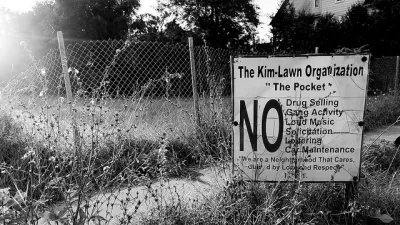Historically the one-year data may be an aberration as suburbs have outgrown cities for every decade since the 1920s. It may be as much a consequence of the recession and housing bust as a preference for urban living, but builders are responding.
Conor Dougherty and Robbie Whelan report on census data released June 28 covering the year July 2010 to July 2011.
"According to Census data, in 27 of the nation's 51 largest metropolitan areas, city centers grew faster than suburbs between . By contrast, from 2000 to 2010 only five metro areas saw their cores grow faster than the surrounding suburbs", said William Frey, a demographer at the Brookings Institution.
The turnaround, if only temporary, is apparent in Chicago.
"That city grew by 8,800 residents, or about 0.3%, from July 2010 to July 2011, compared with an average annual loss of 20,000 people between 2000 and 2010. "I suspect the modest growth of the urban cores is a short-term phenomenon," Kenneth Johnson, senior demographer at the Carsey Institute at the University of New Hampshire, said.
"Home builders are betting that there is a longer-term shift under way. Three of the largest publicly traded U.S. home-building companies: Toll Brothers Inc., Lennar Corp. and Hovnanian Enterprises Inc. have in recent years built mid-rise and high-rise condominium towers in urban areas looking to capitalize on consumers' rising distaste for long commute times and interest in housing that is closer to cities' cultural and job centers."
FULL STORY: Cities Outpace Suburbs in Growth

Study: Maui’s Plan to Convert Vacation Rentals to Long-Term Housing Could Cause Nearly $1 Billion Economic Loss
The plan would reduce visitor accommodation by 25,% resulting in 1,900 jobs lost.

North Texas Transit Leaders Tout Benefits of TOD for Growing Region
At a summit focused on transit-oriented development, policymakers discussed how North Texas’ expanded light rail system can serve as a tool for economic growth.

Why Should We Subsidize Public Transportation?
Many public transit agencies face financial stress due to rising costs, declining fare revenue, and declining subsidies. Transit advocates must provide a strong business case for increasing public transit funding.

Dear Tesla Driver: “It’s not You, It’s Him.”
Amidst a booming bumper sticker industry, one writer offers solace to those asking, “Does this car make me look fascist?”

A Visual Celebration of Manhattan’s Chinatown Elder Community, Through Food
Lanterns, cafeteria trays, and community connection take center stage in this stunning photo essay.

How to Make US Trains Faster
Changes to boarding platforms and a switch to electric trains could improve U.S. passenger rail service without the added cost of high-speed rail.
Urban Design for Planners 1: Software Tools
This six-course series explores essential urban design concepts using open source software and equips planners with the tools they need to participate fully in the urban design process.
Planning for Universal Design
Learn the tools for implementing Universal Design in planning regulations.
City of Santa Clarita
Ascent Environmental
Institute for Housing and Urban Development Studies (IHS)
City of Grandview
Harvard GSD Executive Education
Toledo-Lucas County Plan Commissions
Salt Lake City
NYU Wagner Graduate School of Public Service





























